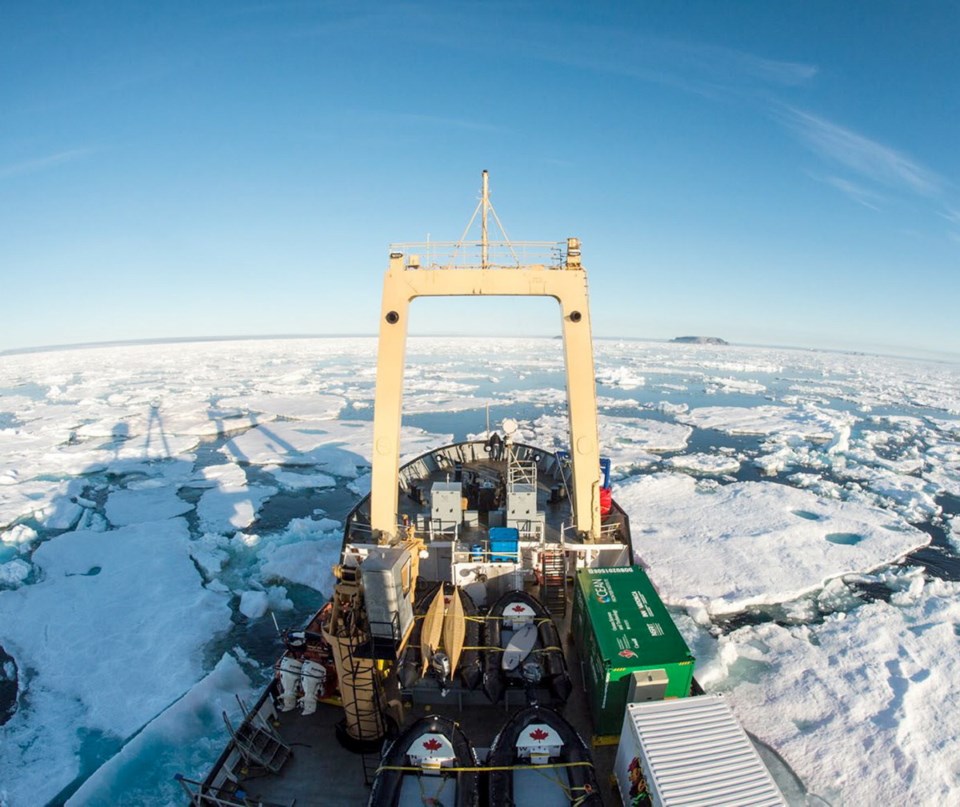Having just returned from the Arctic on board HMCS Ville de Quebec, I was able to witness first-hand how the glaciers are receding and ice patterns are changing. Increased commercial traffic and the race for Arctic sovereignty, converged with a heavily aged coast guard fleet, means there is no time to waste for the replacement of sa���ʴ�ý’s icebreaker fleet. It is a matter of urgency — for national security, the economy and for the protection of the environment. We can no longer rely on an icebreaker fleet built in the 1960s and 1970s, and as building ships takes time, there is no time to waste.
Fortunately, this summer, Prime Minister Justin Trudeau launched a procurement to seek a third national shipbuilder, and the deadline for submission just closed.
Adding the capacity of a third shipyard to the National Shipbuilding Strategy is prudent, responsible and common sense. After eight years and only one ship delivered, it became crystal-clear that the program was badly in need of extra capacity. And if we learned anything from the past eight years, it is that building a shipyard to build ships is not a practical, timely or cost-effective solution.
The past seven years have witnessed a renaissance in shipbuilding in sa���ʴ�ý. From LNG- and battery-powered ferries to complex subsea construction vessels, an offshore fisheries science vessel and a naval support ship, Canadian shipbuilders have put our industry back on the map, in several cases earning international applause. Now we need to leverage the existing experience, skills and capacity we have built up to deliver a new fleet of icebreakers for the Canadian Coast Guard.
This is particularly the case for the two classes of ship that will be built at sa���ʴ�ý’s third national shipbuilder: six 8,000-tonne heavy icebreakers and one or two 23,000-tonne polar icebreakers. These very large and complex ships are not something that can be built by the inexperienced. They will work in the harshest Arctic and sub-Arctic conditions, crucially maintaining our trade routes, protecting the environment and ensuring our national security and sovereignty. We owe it to the men and women of our nation’s coast guard to build these vessels to the highest standards in a timely fashion right from the get-go.
That is why the government’s procurement department has insisted that sa���ʴ�ý’s third shipbuilder in the strategy follows the same requirements as were established in the original National Shipbuilding Strategy competition from 2011, most notably that in order to qualify, Canadian shipyards must have at least built a small vessel of just 1,000 tonnes. If a shipbuilder can’t meet those basic requirements, then there is no way they would be ready to build the monstrous vessels that are so badly needed by the Canadian Coast Guard.
The solution for this is a yard that has the capability, experience and capacity to deliver what the coast guard needs and do it quickly and efficiently. We need it to begin work yesterday, so the choice the government is faced with is quite limited.
The government knows that sa���ʴ�ý needs a third national shipbuilder that will deliver a timely, quality solution and our members, comprising shipbuilders, shipyards and marine suppliers, stand ready to build and maintain sa���ʴ�ý’s future coast guard fleet.
Let’s get it done. The bids are in, and while it will be no surprise to anyone who the winner almost certainly is, we need to get this process moving forward so that our Canadian suppliers can ramp up and rise to the challenge.
After four years, it is time for the government to act.
Colin Cooke is president and CEO of the Canadian Marine Industries and Shipbuilding Association.



